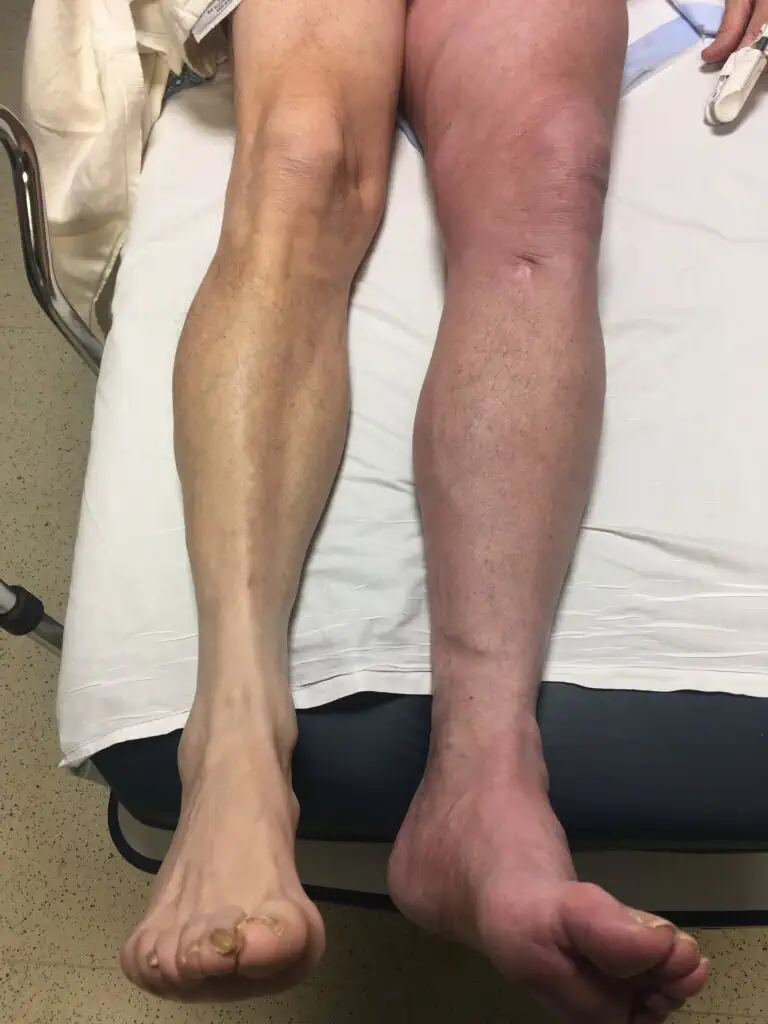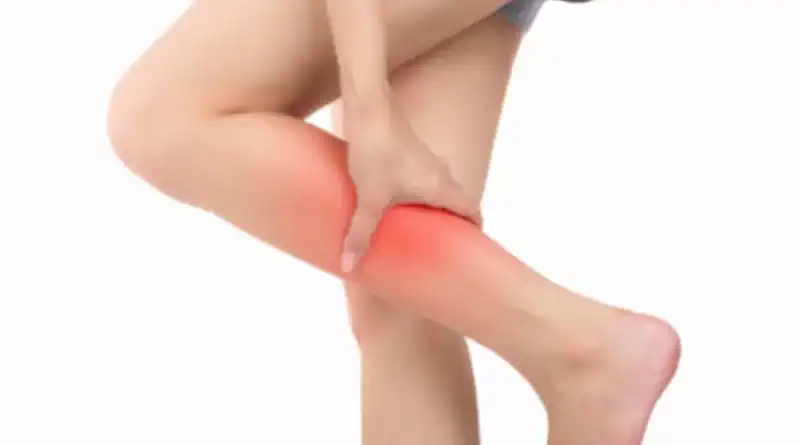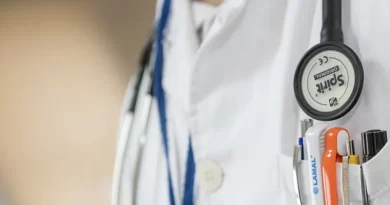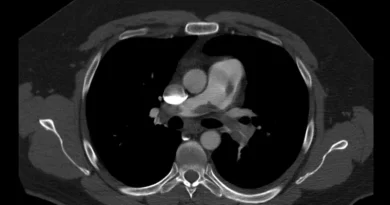DVT Symptoms
A DVT is another name for a deep vein thrombosis. This is a blood clot in a vein. Most DVT happen in the leg veins. But they can also happen in other places like in an arm vein or in a vein in the brain or the abdomen. Not every DVT will cause symptoms. Sometimes we discover them incidentally when we perform imaging for other reasons. But still, most often there are symptoms. And as you can imagine, DVT symptoms depend on the location of the clot.
Leg DVT Symptoms
The two most common DVT symptoms in the legs are pain and swelling. The pain starts suddenly. It is a result of pressure buildup in the leg, because the clot is blocking flow in the veins. Patients usually describe an ache or a cramp.
The location of the swelling depends on the location of the clot. The most common complaint is of calf swelling. Put together, most people will complain of a painful, swollen calf that started suddenly. But if the clot is more extensive, the swelling will also be more extensive. Blood clots that extend all the way to the thigh will cause thigh swelling and even swelling in the buttocks. Men might experience a swollen scrotum. Women might have pelvic pain.

If the clot is very extensive, the swelling may be so severe that it will block off artery blood flow. When this happens we call it phlegmasia. This is a medical emergency. Without treatment phlegmasia can lead to gangrene.
As you can see in the picture, skin color changes are possible with leg vein clots. A DVT will reduce the ability of blood to leave the leg and circulate back to the heart. As blood accumulates the leg will turn reddish or bluish.
Symptoms of a DVT in the Arm
Most blood clots in arm veins happen because of catheters. Some people will need these catheters to administer medication or nutrients. Sometimes, people will have a pacemaker in place and a clot might form around the pacemaker leads. In fact, if there are more pacemaker leads, the chance for a clot increases because there is less room for blood to flow.
In the arm, DVT symptoms are similar to the leg: pain and swelling. But because catheters cause many clots, there is also a unique feature. If a catheter malfunctions then a clot on the tip might just be the cause.
Paget-Schroetter Syndrome
Paget-Schroetter Syndrome is when a clot happens in the subclavian veins because it is pinched between the clavicle and the surrounding muscles. Sometimes a cervical rib is the cause. This scenario is unique. The clot will usually happen in people who use their arms repetitively. A classic example is a baseball pitcher. But there are many other examples. For instance, shoveling snow (and throwing the snow over your shoulder with the shovel again and again).
People who develop clots as a result of repetitive effort will often have sentinal veins. These are veins around the chest on the side of the compression. They represent collaterals around the pinched vein.
Sometimes people who develop a clot from Paget-Schroetter syndrome describe chronic arm swelling and discoloration.
Clots in the Abdomen
In the abdomen, the most common location for a DVT is the portal vein. But a DVT might also develop in a mesenteric vein. Symptoms depend on the exact location. There may be pain, abdominal swelling, ascites and even mesenteric ischemia. So it is hard to specify exactly what the symptoms will be in a brief summary.
Dural Vein Thrombosis
Clots in the brain veins or in the veins surrounding the brain are unique. Symptoms really depend on the exact location. Headache is typical. Otherwise, there could be any one of many neurological symptoms from seizures to altered mental status to stroke like deficits. But otherwise, it is hard to be more specific.



